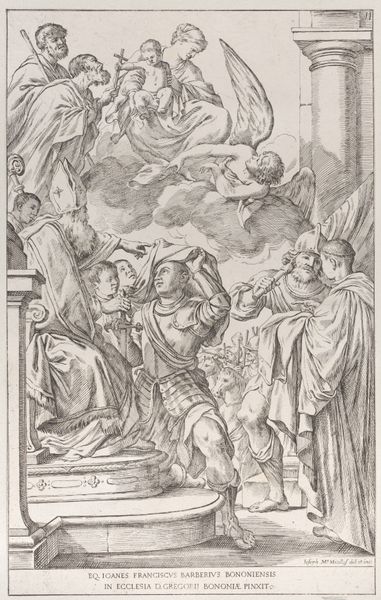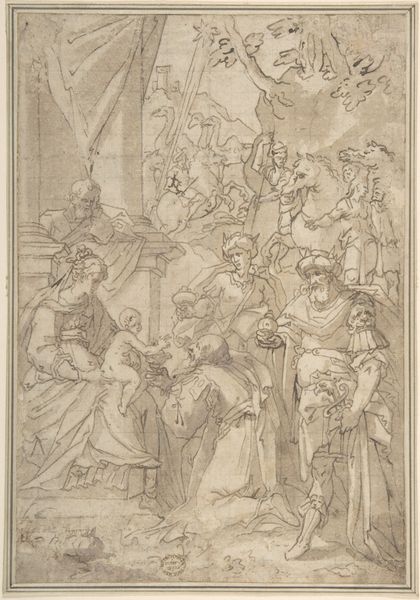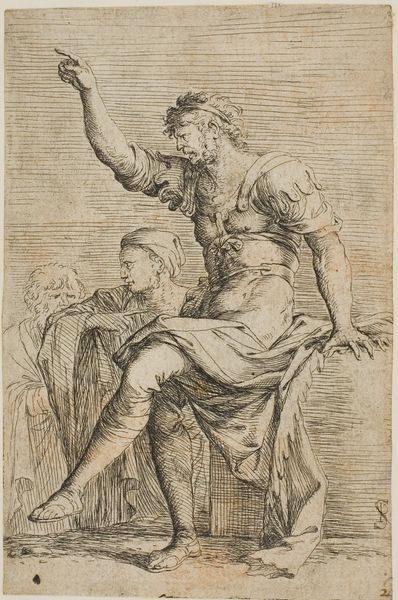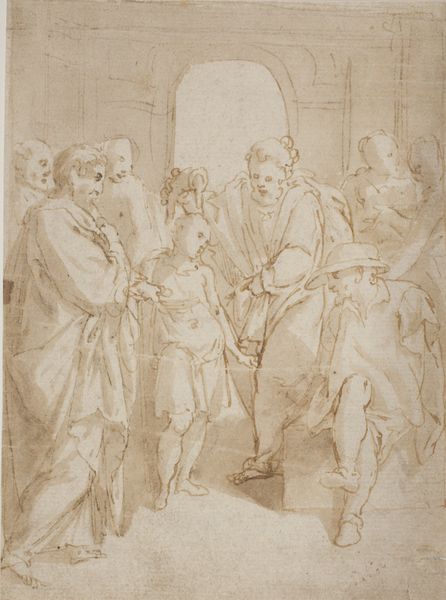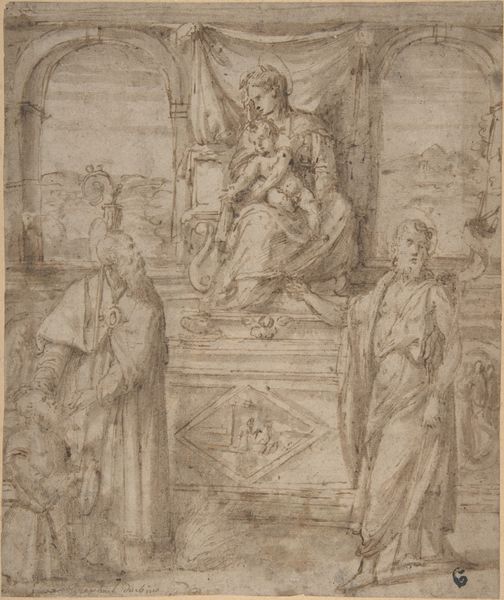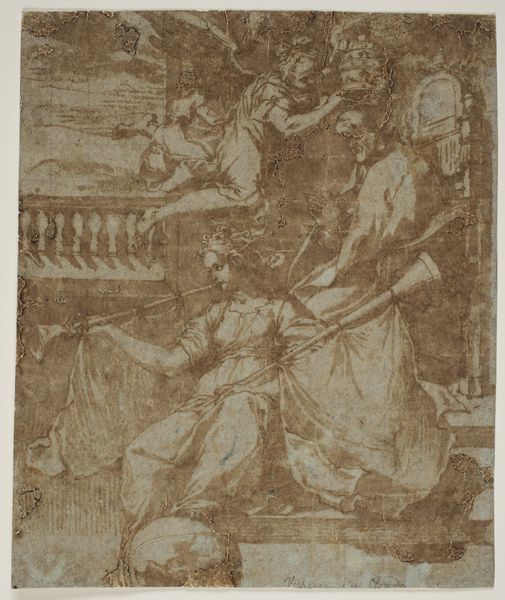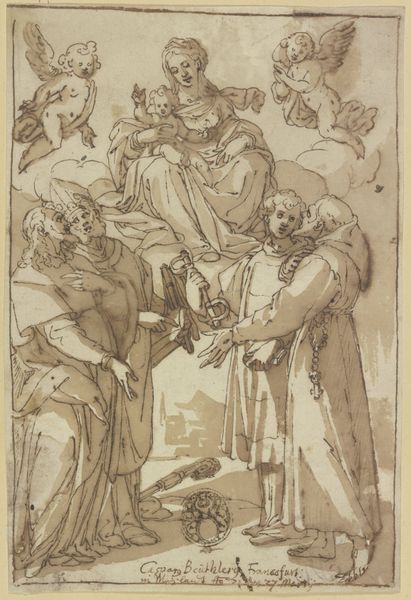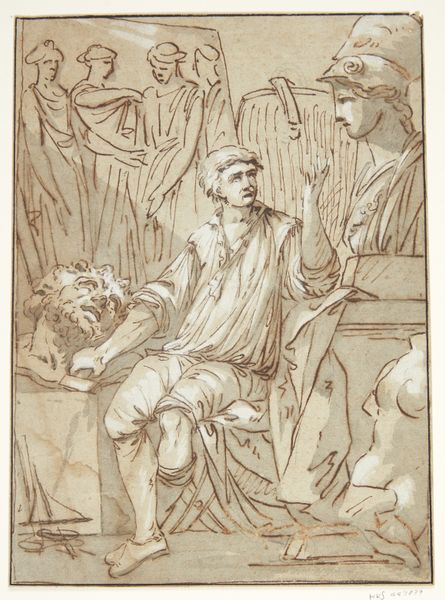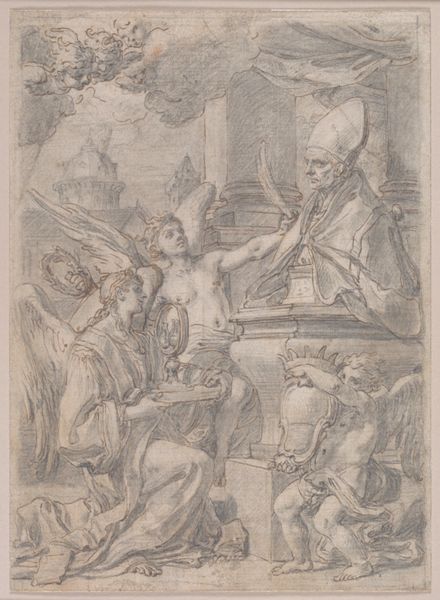
drawing, ink
#
portrait
#
drawing
#
baroque
#
figuration
#
ink
Copyright: Public Domain
This drawing of Pilate was created by Peter Paul Rubens, and is now at the Städel Museum. The scene is rendered in sepia ink, with dense hatching that gives the composition an almost palpable weight and texture. The figure of Pilate, enthroned, dominates the space through the sheer volume of his form and the ornateness of his attire. Rubens employs a structural technique here to convey a sense of authority and perhaps moral ambiguity. Pilate is positioned at the apex of a triangular composition, visually reinforcing his power. The surrounding figures are sketched with varying degrees of detail, which draws our attention to the central figure but also to the psychological drama unfolding around him. The lines are not just descriptive; they build a complex interplay of light and shadow that adds depth. Rubens uses line to create a visual rhetoric. This drawing doesn't just depict a biblical scene; it uses its formal elements to explore themes of power, judgement, and human fallibility.
Comments
stadelmuseum about 2 years ago
⋮
Owing in part to its quotations from the Renaissance art of Lucas van Leyden and Albrecht Dürer, Goltzius’s Passion series was considered an exemplary and classic work. This circumstance is also expressed in the copy drawn by the young Peter Paul Rubens after the engraving Christ before Pilate. The copying process served Rubens as a means of reflecting on the original. He concentrated on the group around Pilate, and particularly on the discerning gaze. To this end, he shifted the two heads at the right to a somewhat higher position. Opposite Pilate, in the place of Jesus, are two heads from the engraving Christ before Caiaphas.
Join the conversation
Join millions of artists and users on Artera today and experience the ultimate creative platform.
